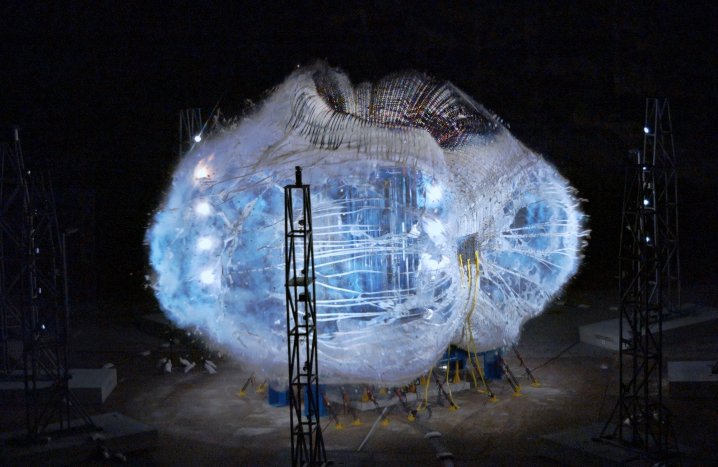
With the aging International Space Station (ISS) facing a fiery end in about seven years from now, attention has been turning to new designs to replace the orbital outpost.
One such company exploring various solutions is space technologies-focused Sierra Space. The Colorado-based team has been developing the inflatable LIFE (Large Integrated Flexible Environment) habitat for commercial space stations and recently worked with NASA to conduct a pressure test on a full-scale LIFE module that ended with a dramatic — but expected — explosion.
The plan was to test how much pressure the habitat’s shell is capable of handling — an important process if it’s ever to face the harsh environment of space. And the good news is that it went way beyond what’s required.
The video below offers some insight into the design of LIFE and shows test preparations and the explosion itself, which takes place at the 5:55 mark.
Sierra Space also shared some spectacular slow-motion footage of the moment the LIFE habitat broke apart.
The full-scale UBP test unit reached 77 psi before it burst, which well exceeds (+27%) #NASA’s recommended level of 60.8 psi (maximum operating pressure of 15.2 psi multiplied by a safety factor of four).
Full video: https://t.co/5XumopCb0H@NASA_Marshall pic.twitter.com/WO4YyPUA05
— Sierra Space (@SierraSpaceCo) January 22, 2024
The habitat’s pressure shell is made of expandable “softgoods,” or woven fabrics that perform like a rigid structure once inflated, Sierra Space explains on its website.
The full-scale unit used in the test reached 77 psi (pounds per square inch) before it burst, well beyond NASA’s recommended level of 60.8 psi.
The exciting thing about LIFE is that its inflatable design means it requires very little space to launch to space as it only needs to be inflated once it’s in orbit.
Notably, LIFE is able to achieve one-third of the volume of the ISS in a single launch. The space station took more than 40 flights to assemble, so far fewer missions would be required if a space station were built using multiple inflatable habitats. This would mean a dramatic reduction in construction costs.
“We are driving the reinvention of the space station that will shape a new era of humanity’s exploration and discovery in low-Earth orbit and beyond,” Sierra Space CEO Tom Vice said after the successful test.
“Sierra Space’s inflatable space station technology offers the absolute largest in-space pressured volume, the best unit economics per on-orbit volume, and lowest launch and total operating costs. Having the best unit economics positions Sierra Space as the category leader in microgravity research and product development, providing customers with the most attractive return on their investment.”
Sierra Space isn’t the only company looking at building a commercial space station, with SpaceX and LA-based Vast, among others, partnering in a plan to send their own design to space in the coming years.
Editors’ Recommendations

